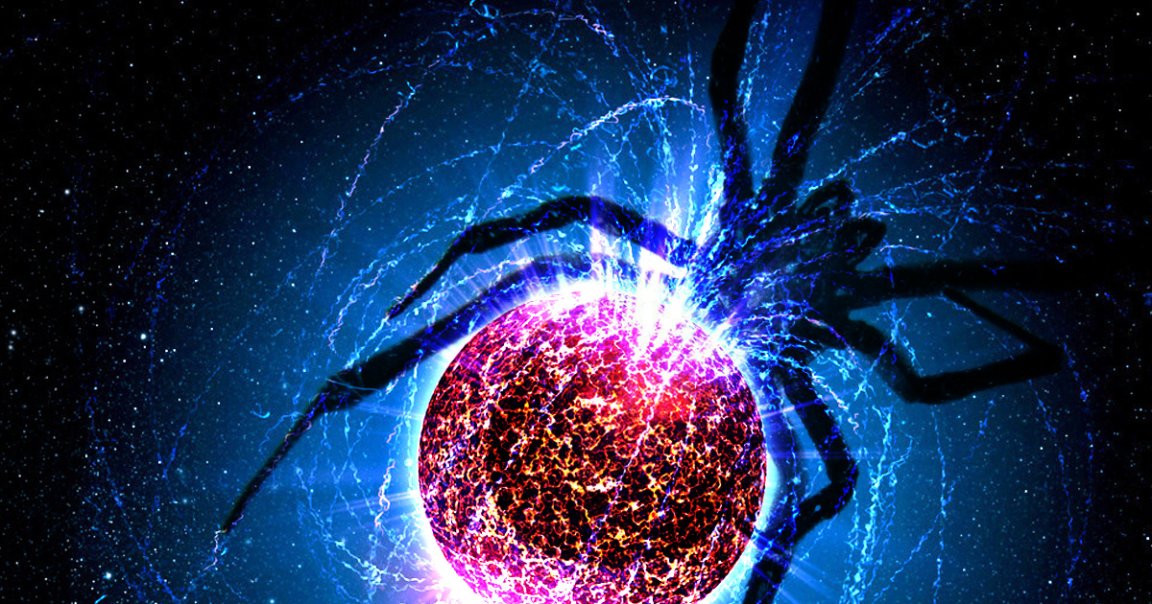
An international team of astronomers have spotted a new type of “spider star” — highly energetic pulsars that tear up their companion stars in binary systems.
These highly energetic celestial objects have long fascinated astronomers because they flicker in the night sky in regular rhythms. But before we go on, let’s take a couple of steps back.
When a supergiant star collapses in on itself following a supernova, it leaves behind extremely dense remains in the form of a neutron star or white dwarf. With enough electromagnetic radiation, such a star can start spinning at a dizzying clip, turning itself into a pulsar — almost like a cosmic lighthouse.
Astronomers are able to spot these odd stars by observing their regular cosmic ray outbursts released during each rotation, with periods ranging from several milliseconds to whole seconds. They’re so predictable, in fact, that scientists suggest using the location of various pulsars to create a kind of “celestial GPS.”
Pulsars completing a rotation every 30 milliseconds or less are often referred to as “spider stars” since they are usually found in binary systems where a closely orbiting companion star is actively being broken down by the pulsar accreting matter from its companion.
Spider stars tend to circle their binary star companions at such close distances, they end up tearing their companion to shreds, as Live Science points out.
That’s how a subclass of these violent stars ended up with the nickname of “Black Widow Stars,” named after the spider genus in which the female eats the male after mating.
“Redback” stars, on the other hand, have a higher mass companion star, which causes signals to be eclipsed every time the companion star passes between it and the Earth.
In a new yet-to-be-peer-reviewed paper uploaded to the preprints server arXiv, an international team of astronomers outline their discovery of eight binary millisecond pulsars (MSPs) using the Arecibo Observatory in Puerto Rico, the same one that collapsed unexpectedly in December.
Among these eight stars, three of them are newly identified black widows and one is a redback — as well as a pulsar that defies classification, as the researchers write in their paper. This odd-one-out star has a companion star that would be too massive to be classified as a black widow, but not massive enough for a typical redback.
“This system may represent a rare middle-ground case between these two observational classes,” the astronomers wrote in their paper.
READ MORE: Now-dead radio telescope finds bizarre venomous-spider star [Live Science]
More on pulsars: New Technique Uses Entire Milky Way as a Giant Observatory